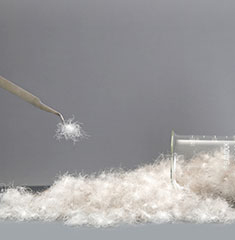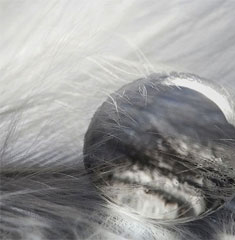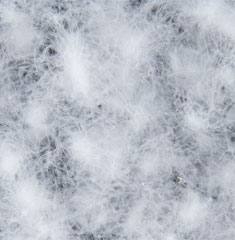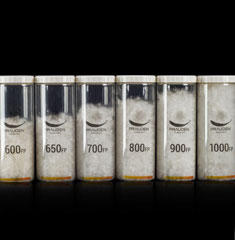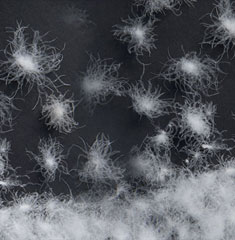
Introduction of new insulation materials
2022-03-29
New types of thermal insulation materials for outwears are hitting the market, as opposed to traditional insulation such as wool, down, and padding. Let us introduce new products launched by a variety of brands for a glimpse of the latest trend of thermal insulation materials.
New thermal insulation materials
Aerogel Composite Material
Made of aerogel, the lightest solid available on earth. Easy to cut and process, and applicable to a variety of designs given its elasticity in all directions. Also convenient to wear and keep as it comes with no such issues as fiber clumping or moving. Effective thermal insulation even in a damp environment.

<Supield – S.Kistler Aerogel Composite Material>
source: ISPO
Hybrid material for insulation
Defined as a hybrid between free fibers and rolled insulation. This is a versatile loose fiber that can be blown into channels, panels or manually inserted and can also be used with custom designs. Its stable layer minimizes cold spots and clumping, and becomes more stable and up to 10% warmer after washing.

<Thermore – Ecodown Fibers Genius>
source: Thermore
Down between sheets
Down sheet contained between two thin layers of scrim. Blended with corn-based fiber, sorona.

<Thindown – Thindown sorona>
source: Thindown
Insulation material reflecting a wearer’s movement
This material looks like a woven net, and is both elastic and breathable. Remain thin to adjust moisture and heat while the wearer is moving, but expand up to 20% in volume, when the movement stops, creating a layer of warm air to enhance thermal insulation. Suitable for active outdoor sports such as cycling, running and skiing.

<comfortemp – FLEXX padding>
source: ISPO
Eco-friendly insulation material
Made from recycled waste fabric
Insulation material upcycled from cloth scraps of coat production processes. Camel or cashmere scraps are transformed into fine fiber and blended with recycled polyester staple fiber. Eco-friendly material with less energy consumption and wastes.

<IMBOTEX – CAMELUXE>
source: ISPO
Fish scales turn into garment insulation material.
Made from fish scales, a byproduct of the food industry. Soft, high-moisture insulation material manufactured by combining fiber materials with collagen peptide amino acids extracted from fish scales. Amino acids offer the permanent deodorization effect.
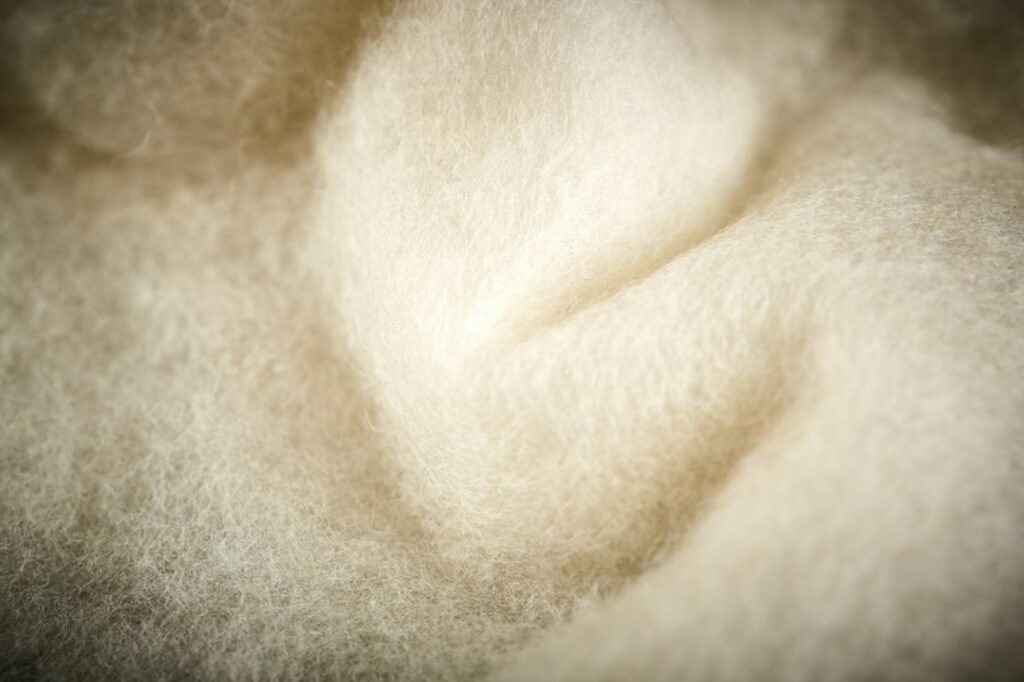
<Umorfil – Sensilate Umo>
source: ISPO
Material made from fast-growing plants
This material is made from hemp, nettle and PLA (polylactic acid). Hemp grows to harvest in just 100 days with no need to use pesticides. As such, its fast and chemical-free cultivation consumes less energy and causes minimum soil pollution.
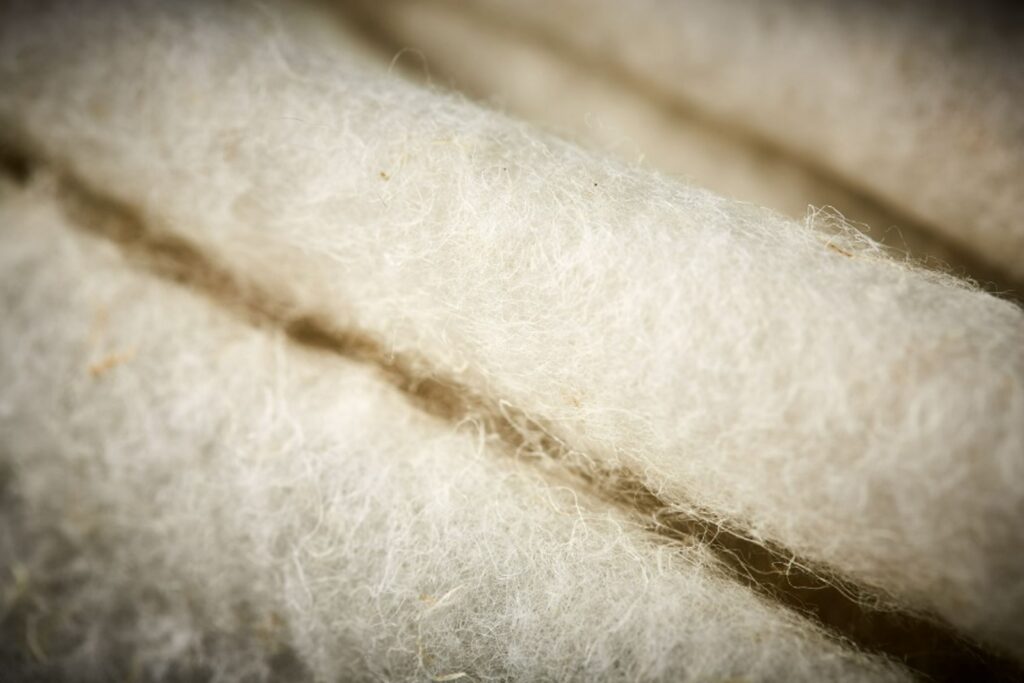
<IMBOTEX – HEMP & NETTLE>
source: ISPO
Material made of recycled cashmere
Discarded cashmere clothing such as sweaters is recycled into insulation sheets through collecting, sorting, sterilization and carding processes. Manufactured in Italy and GRS certified.

<IMBOTEX – RECASHMERE®>
source: ISPO
Materials made from coffee grounds
Made from recycled waste plastic bottles and left-over coffee grounds, this coffee-based yarn absorbs odors, let alone keeps you warm.
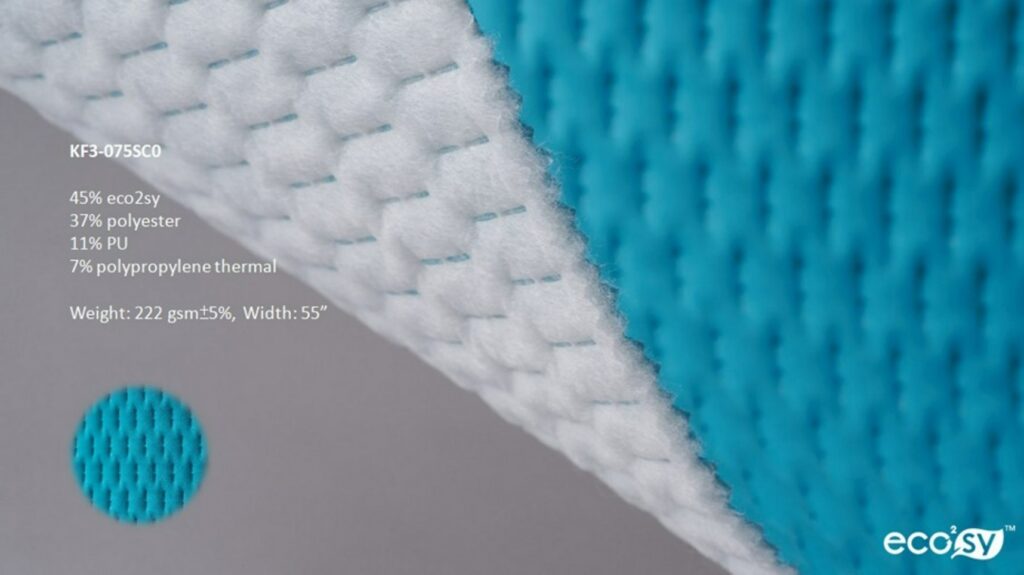
<SINGTEX – S.Café® eco²sy®>
source: ISPO
Down blended with kapok
Insulation material manufactured by combining recycle down with fibers of kapok fruits that grow in tropical regions. Minimum environment impact as kapok trees grow in the natural environment with no use of pesticides. GRS certified.
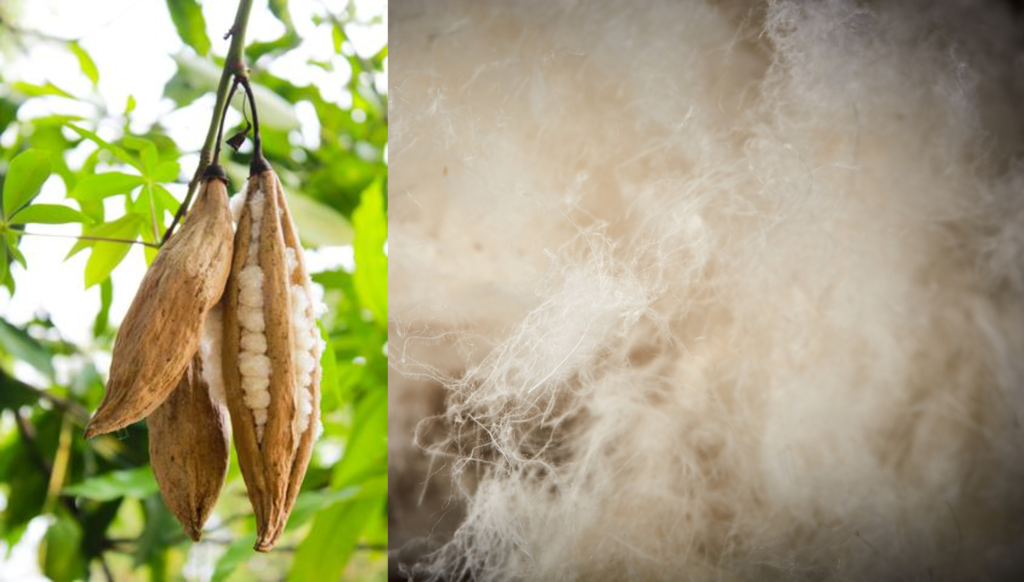
<kapok fruit(left), MINARDI – FLOWER DOWN(right)>
source: ISPO
By Brand Part, Lee Su-kyung






